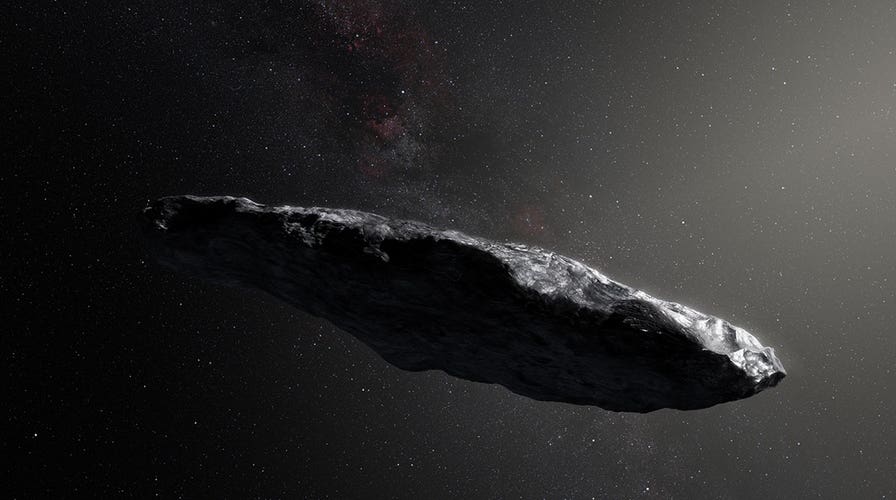Fox News Flash top headlines for June 1
Fox News Flash top headlines are here. Check out what's clicking on Foxnews.com.
The mystery surrounding the interstellar object 'Oumumua seemingly gets weirder by the day.
A new study, which has not yet been peer-reviewed, suggests the interstellar object could be made of hydrogen ice. Hydrogen is the most abundant element in the universe, but it's rarely observed in a solid form.
“We developed a theory that explains all of ‘Oumuamua’s weird properties,” said study co-author Gregory Laughlin, a professor of astronomy in Yale’s Faculty of Arts and Sciences, in a statement. “We show that it was likely composed of hydrogen ice. This is a new type of object, but it looks like there may be many more of them showing up, going forward.”

Artist's illustration of 'Oumuamua, the first known interstellar object spotted in our solar system. (M. Kornmesser/ESO)
MYSTERIOUS INTERSTELLAR OBJECT 'OUMUAMUA GETS NEW ORIGIN STORY
The cigar-shaped 'Oumuamua, which was first discovered in October 2017, is unlike anything researchers had ever seen before, due to its shape, as well as its dry surface.
The research notes that hydrogen ice, which needs extremely cold temperatures, is something that is present in the cores of molecular clouds. Molecular clouds form the basis of stars and the researchers believe 'Oumuamua could contain hydrogen ice after it passed by one of these molecular clouds in deep space, which could explain its speed.
“As ‘Oumuamua passed close to the Sun and received its warmth, melting hydrogen would have rapidly boiled off the icy surface,” the study's lead author, Darryl Seligman explained, “providing the observed acceleration and also winnowing ‘Oumuamua down to its weird, elongated shape — much as a bar of soap becomes a thin sliver after many uses in the shower.”
It's possible that these "hydrogen icebergs" or "hydrogen comets" could be more prevalent in the solar system, which could give researchers new information about how stars and planets form.
“Their presence would be an accurate probe of the conditions in the dark recesses of star-forming clouds and provide a critical new clue for understanding the earliest phases of the still-mysterious processes that generate the birth of stars and their accompanying planets,” Laughlin noted.
INTERSTELLAR VISITOR 'OUMUAMUA' NEVER SHOULD HAVE LEFT HOME, THEORIES SAY
The 900-foot long cigar-shaped 'Oumuamua has led to some researchers to believe it could be an alien probe.
A study published in November 2018 from the Harvard Smithsonian Center for Astrophysics suggested it could be "a lightsail of artificial origin" sent from another civilization.
The researcher who discovered 'Oumuamua, Canadian physicist and astronomer Robert Weryk, said the idea it was from another civilization was just "wild speculation."
No longer observable by telescopes as of January 2018, many have speculated what 'Ouamumua is. In addition to the light sail theory, some have theorized that it is a comet or an asteroid.
The mystery about its exact nature deepened in late 2018, when NASA said it had been looking in 'Ouamumua's direction for two months but did not originally see it.

